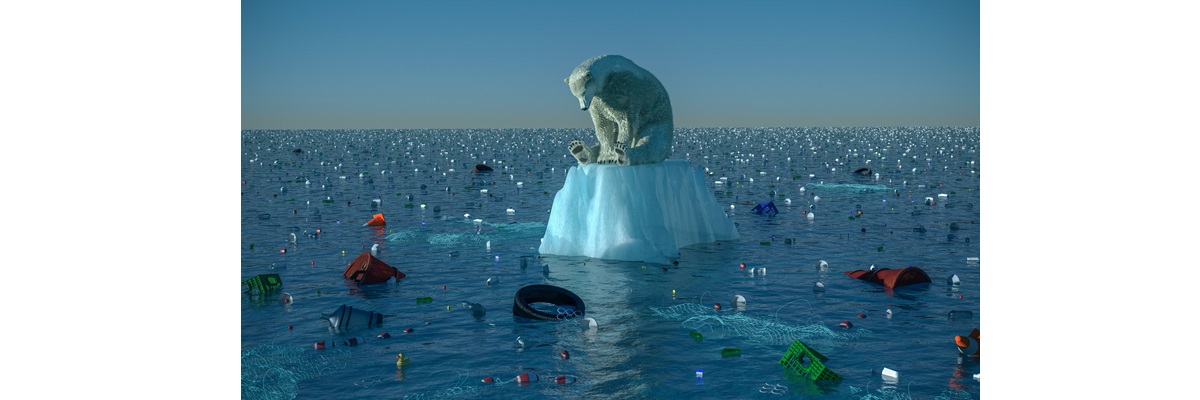Sharing Date3 Aug, 2022

Global warming is a widely known and accepted problem all over the world. There are different opinions on how to fight global warming. Just as there are those who argue that radical measures should be taken and average comfort standards should be abandoned, some optimists claim that developing technology will automatically provide options that will allow us to find a solution. Although proposals for solutions to stop global warming vary, the crux of this critical problem remains the same: the number of concrete steps is not as high as it should be, and if this is not changed, the consequences of the effects of global warming will become more and more dramatic.
Recently, unusual meteorological events are observed much more and they offer us clear clues about what may happen next. Examples such as shifting seasons, sandstorms, temperature fluctuations, tornado events that we are not accustomed to in our country, or the Supercell event of 2017 give a hint of the possible course of extreme weather events. The destruction caused by unusual events such as typhoons, hurricanes, fires, and floods can also be greater than predicted. For example, the 2019-2020 Australian Bushfires lasted 240 days, and an area of about 80,000 km2 (the size of 11,200,000 football fields) was burned to ashes. In 2020, according to the temperature values that have been recorded since the 19th century, temperatures in the North Pole reached 38 degrees Celsius for the first time, and this temperature increase led to the destruction of 20,000 km2 (the size of 2,800,000 football fields) of green space due to the forest fire in the place where is known for its freezing temperatures, Siberia. In the very same year, the ice floe caused a fuel leak in Norilsk in May. In 2022, some of the events caused by climate change in Turkey include; the combination of winter with spring, floods on summer days, the invasion of agricultural areas by locusts or caterpillars, sandstorms, and dust clouds in Eastern and Southeastern Anatolian provinces. If appropriate measures are not taken, it is foreseen that such disasters on a global scale will increase and their effects will become more destructive over time.
How and in what way the possible effects will emerge is also an issue that needs to be emphasized. For example, it is obvious that the current ice masses will raise sea levels and cause floods& climate fluctuations. But the consequences of the melting of the glaciers will not be limited to these. In Siberia, melting ice floes appear to form bubbles over the seabed. These bubbles contain methane gas, which is released as a result of the melting of glaciers. This gas release causes the glaciers to melt and the cycle that feeds each other poses a great risk. According to a study by the University of Alaska Fairbanks, the methane emission at this point is the same amount that scientists predict occurs all over the world in a year; that is, exactly 8 million tons!
One of the images that come to mind when the effect of global warming is thought of is the polar bears. It is widely known that polar bears are endangered, but the role of this species in the ecosystem, the impact of their extinction on the food chain, and even how their presence slows global warming are not discussed enough. Polar bears need to hide on ice floes and provide suitable hunting conditions to hunt seals which are polar bears’ main food sources. However, rapidly melting ice floes restrict the polar bears’ range of movement and make it very difficult for them to reach the feed. Access to seals is restricted for female polar bears and their cubs, which could not swim easily for long distances between the glacier masses broken due to melting, and their survival becomes difficult. The decrease in the number of polar bears causes an uncontrolled increase in the population of walrus, seals, whales, reindeer, rodents, and birds. This is likely to be the initial cause of a food shortage in the region. In addition, the breathing holes opened by seals, whose population would begin to increase uncontrollably, will lead to breaks in the ice floes, which will cause surface area to decrease and the melting to increase. The impact of even one living species out of the food chain is so great on our world and on the rate of warming that, if precautions are not taken, it is most likely that the ‘species to be lost’ will tragically change our lives, atmospheric conditions and natural balance.
It is clear that negative scenarios are annoying and depressing enough. For positive scenarios, there is a critical precondition: an urgent peace contract with nature! Continuing with the poles example, it is too important to disseminate the reduction, restriction and supervision endeavors for the work and initiatives such as mining, natural gas, and oil exploration and extraction activities, energy transmission infrastructure works, defense, and maritime transportation carried out at the poles, to control methane gas emissions, protect regions and balancing global temperature values. Of course, it is not enough to prevent such activities only at the poles; every production facility, every transportation company, and, at the end of the day, every individual is the direct cause of global warming.
In recent years, information such as “rice agriculture causes 1-2% or the meat and dairy sector causes 4% of human-caused greenhouse gas emissions” and warnings such as “use public transport instead of private vehicles” are widely available. There is no doubt that such information contributes to the rise of collective awareness and the increase of sensitivity. However, alarm bells do not only ring for the agricultural sector, production lines, or vehicles. While using technology in every stage of our lives, the question of “how much emission is released for this comfort to be provided” should be in the back of our minds. Internet technology, which is actively used by billions of people, increasingly taking place in our lives and even offered free of charge in some countries as a human right, causes carbon emissions driven by the wireless networks and connection technologies, and we are not even aware of it. The University of Bristol conducted a study in 2016 showing that carbon emissions from YouTube views alone were 11 million 130 thousand tonnes. YouTube, which has increased the number of users by 35% since 2016, ranks 8th in the ranking of the most used websites in 2021. This shows that we need to think about the carbon emissions caused by the total internet pool and their effect on global warming. These days when we cannot remove the internet from our lives, what we loyal users need is to demand R&D projects from technology giant companies for more environmentally friendly use and to support the outputs of these projects.
As experience and research have shown, the bill for the damage caused to nature by human beings is paid sooner or later, and for the payment there is usually no distinction between guilty and innocent. Unfortunately, the price of negligence by big companies, irresponsible producers, or states that put their environmental policies on the back burner is being paid by all of us. Therefore, although there are two edges of the world, there is only the earth, and what is needed to protect the earth is to join hands with a collective series of actions.

